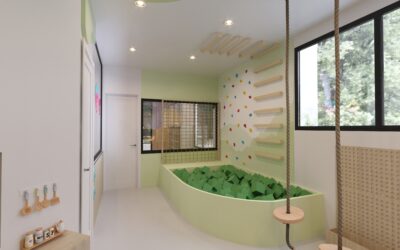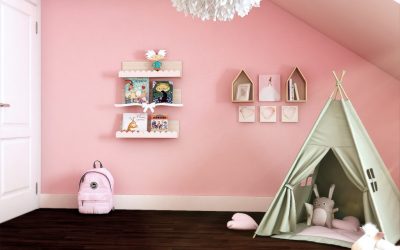Designing a room for children with Autism
In a conversation with architect Christopher Beaver, whom I refer to as the master of designing buildings for people with Autism, he stated that “There are the; jumpers, runners, kickers and ‘spitters’.” Your child may also appear normal, but have challenging behaviour. It is imperative to think of your child’s needs and habits when designing a suitable living space.
However there are some general design principles that need to be applied when designing spaces for children with Autism. Think about your home and all the things that frustrate you… Now think about your child with Autism, their frustration and anxiety would be multiplied significantly, because they have difficulties communicating their distress, and will begin to act out.
 In designing a room for your child with Autism:
In designing a room for your child with Autism:
1. Create a simple layout of the space, one that will give your child easy access to the things he/she will need. If you have limited space, where your child will use one room for sleeping, playing and studying, by all means zone the space.
Define the sleeping area, the pay area and the study space. This is essential if you want your child to sleep at night, if the toys are visible, these will stimulate your child’s mind for play. It may be worth incorporating labels or visual aids to help your child identify and find the things he/she may need.
2. Avoid reflective surfaces that magnify sound, I would suggest carpets or a large rug, if you have hard floors. Ensure the walls are insulated well for good acoustics, to avoid echoing and to keep sound out. Noise has the ability to raise stress levels, interrupt sleep and reduce the quality of life.
3. Natural light is goo but there is a need for appropriate blackout blinds or curtains to control the glare of the sunshine in the day and street lights at night. Lighting needs to be soft and controlled. Avoid fluorescent and flickering lights in your child’s room/ environment. Dimmer switches are an excellent way to control lighting in the room.
4. Colour is another important factor when designing a space for children with Autism Spectrum Disorder. Avoid bright colours such as reds, oranges and yellows, such colours are not suitable for children with Autism, they are stimulating colours.
Research has shown that babies cry more when surrounded by yellow. Use subtle soft colours such as blues, pinks and greys.
5. Avoid large areas of stripes or busy patterns, children with autism usually find them quite disturbing. Where possible use solid furniture and secure them to the walls or floor, to avoid your child removing and using furniture as a weapon.
When hiring a designer, it is important that you provide them with a thorough brief and detail the daily lifestyle of you and your child. This is so they can create the ideal space that will help in your daily living and help improve your child’s quality of life.
At MK Kids Interiors we work with parents/carers and children with Autism Spectrum Disorder to design suitable spaces for their daily use.
Contact:
Medina King
0203 287 3722
Image credit: Pinterest



0 Comments